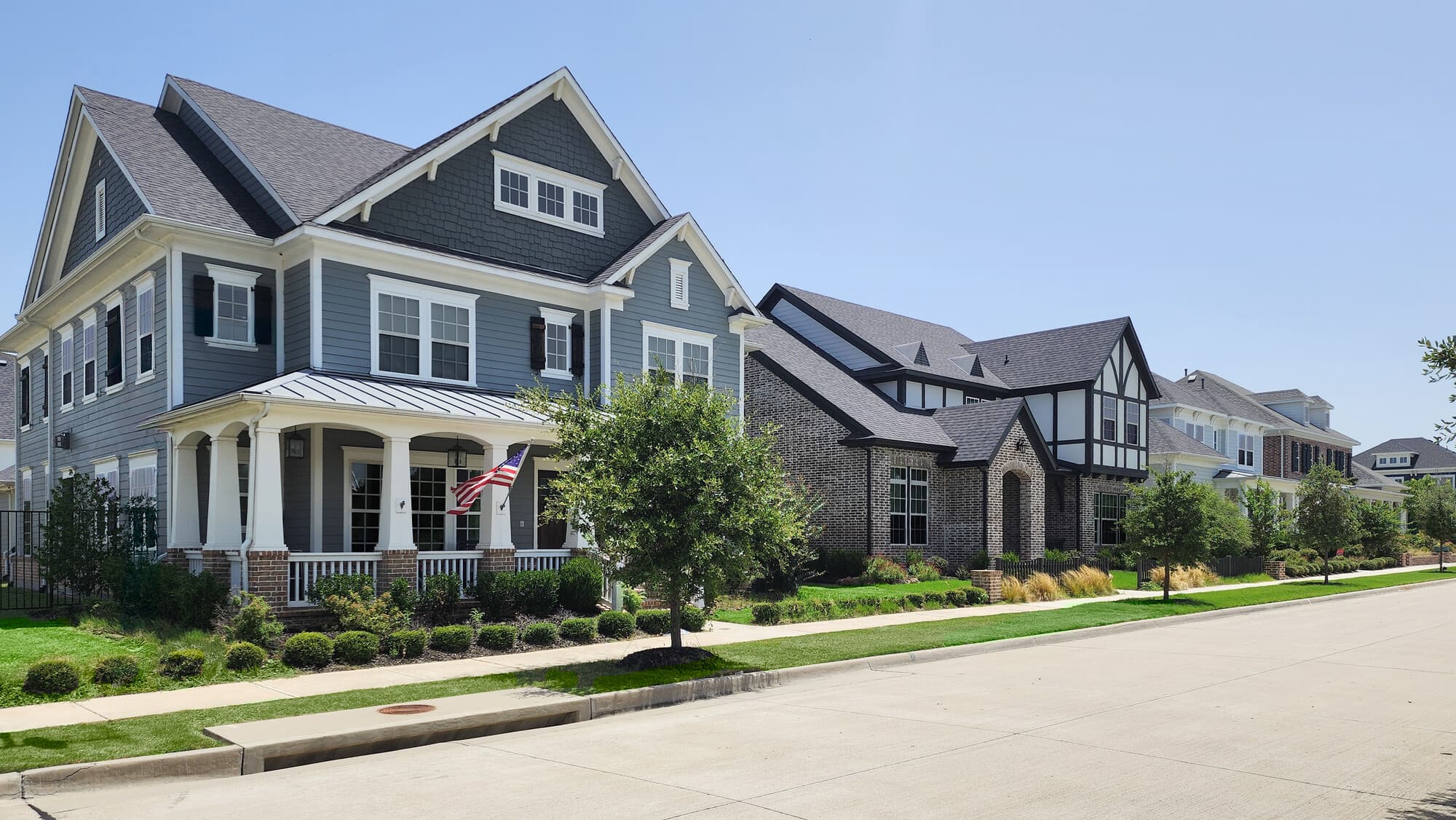Explore Fiber Cement Siding as a Masonry Alternative
Discover how Hardie® fiber cement siding offers Texas developers a weather-resistant, durable alternative to masonry.

In every corner of Texas, developers and homeowners alike have gotten used to brick as a staple element in the construction of their homes. The durability of this building material has helped to maintain property values while creating a cohesive look within master-planned communities.
However, the limited design flexibility and high installation costs of masonry have restricted developers, putting unnecessary limits on their creativity.
With the passage of House Bill 2439 in 2019, which prohibits municipalities from mandating specific exterior siding materials or cladding, developers for new construction homes have a fantastic opportunity to rethink what’s possible for their projects, particularly those within master-planned communities.
With this change, developers now have the ability to write covenants that preserve the premium aesthetic and high resale value traditionally associated with masonry. At the same time, this change unlocks broader design palettes and greater construction flexibility that can turn your projects into standout neighborhoods.
Rethink Your Exterior Siding Standards in a Post-HB 2439 Landscape
The passage of HB 2439 marked an official acknowledgment of the shift in thinking regarding exterior siding standards in Texas. Officially, it prevents cities and other local governments from restricting the use of code-approved building materials that can be used to construct or renovate a home within their boundaries.
For a long time, homeowners and developers alike desired more control over the aesthetic of their properties, and this bill has helped affirm these goals, paving the way for a much wider selection of materials to be used on home exteriors. Masonry will always have a place in Texas home construction, but there are many newer options that can reduce costs for buyers while enhancing durability and increasing design options.
The Benefits of Hardie® Fiber Cement Siding
Hardie® fiber cement siding has emerged as a natural fit for developers, particularly those designing master-planned communities. This weather resistant, durable, and non combustible material* engineered to resist harsh weather can deliver the depth and dimension that modern homebuyers want without compromising the quality or resilience for which your communities are known.
Here are some of the qualities you can expect when working with Hardie® siding and trim.
Durability
It’s no secret that Texas' weather can be unpredictable, and it has only gotten more intense in recent years. Hardie® fiber cement siding is engineered to withstand Texas’ most challenging conditions, from blistering heat to hail and pests.
It’s rated for use in high-velocity hurricane zones by Miami-Dade County in Florida**, and FEMA has even recognized Hardie® siding as flood-resistant since it’s so highly resistant to water damage.
Resilience
In a region where severe storms, cyclones and droughts are becoming more common, material choice has never been more critical. Hardie® siding is non combustible* which makes it one element that can help harden your home against external fires. It’s a simple and easy solution for communities prioritizing resilience and peace of mind without compromising style.
Design Potential
One of the standout benefits of Hardie® fiber cement siding is its design flexibility. Hardie® products are available in a variety of textures and finishes, allowing for a diverse range of design options. With a much wider palette of textures, profiles and colors compared to traditional masonry, it’s easy to integrate homes with Hardie® siding into any community.
“Hardie® products empower us to create both historically inspired and modern-day elevations that are highly sought after by today’s consumers,” says Jennifer Johnson, founder and president of Olivia Clarke Homes. “Hardie® siding enables us to incorporate architectural details using a durable material, ensuring the quality is never compromised.”
Hardie® fiber cement siding also seamlessly complements masonry, creating modern, eye-catching exteriors that will enhance a community’s established appearance. The depth and dimension resulting from these mixed materials are unmistakable, creating distinct streetscapes that reflect the character of the community, all while meeting or exceeding expectations for quality and durability.
Explore the Depth and Dimension of Hardie® Fiber Cement Siding
As developers navigate the market after the passage of HB 2439, the opportunity to rethink standards for exterior cladding is clear, and fiber cement siding is here to meet the moment. Hardie® siding offers the durability, resilience, and design flexibility you need, allowing you to seamlessly integrate it with existing masonry to create standout homes that stand up to the wildest weather in Texas.
“Brick is everywhere in Texas,” shares Alex Cope, director of SFR, Cope Homes. “When you build a home with Hardie® products, you’re the one that stands out. With James Hardie’s vast product line and a few stone accents, you can create an elevation that turns heads.”
It’s time to expand what’s possible. Learn more about how to better shield your homes from extreme weather damage and expand your design possibilities with Hardie® fiber cement siding.
*Hardie® fiber cement products are noncombustible and/or have a Class A fire rating when tested in accordance with ASTM E84. Fiber cement fire resistance does not extend to applied paints or coatings, which may be damaged or char when exposed to flames. The use of noncombustible siding, combined with other fire mitigation measures, may help harden a home against external fire.
**See https://www.miamidade.gov/building/pc-result_detail_app.asp?app_alias=101129 for a list of approved Hardie® products.